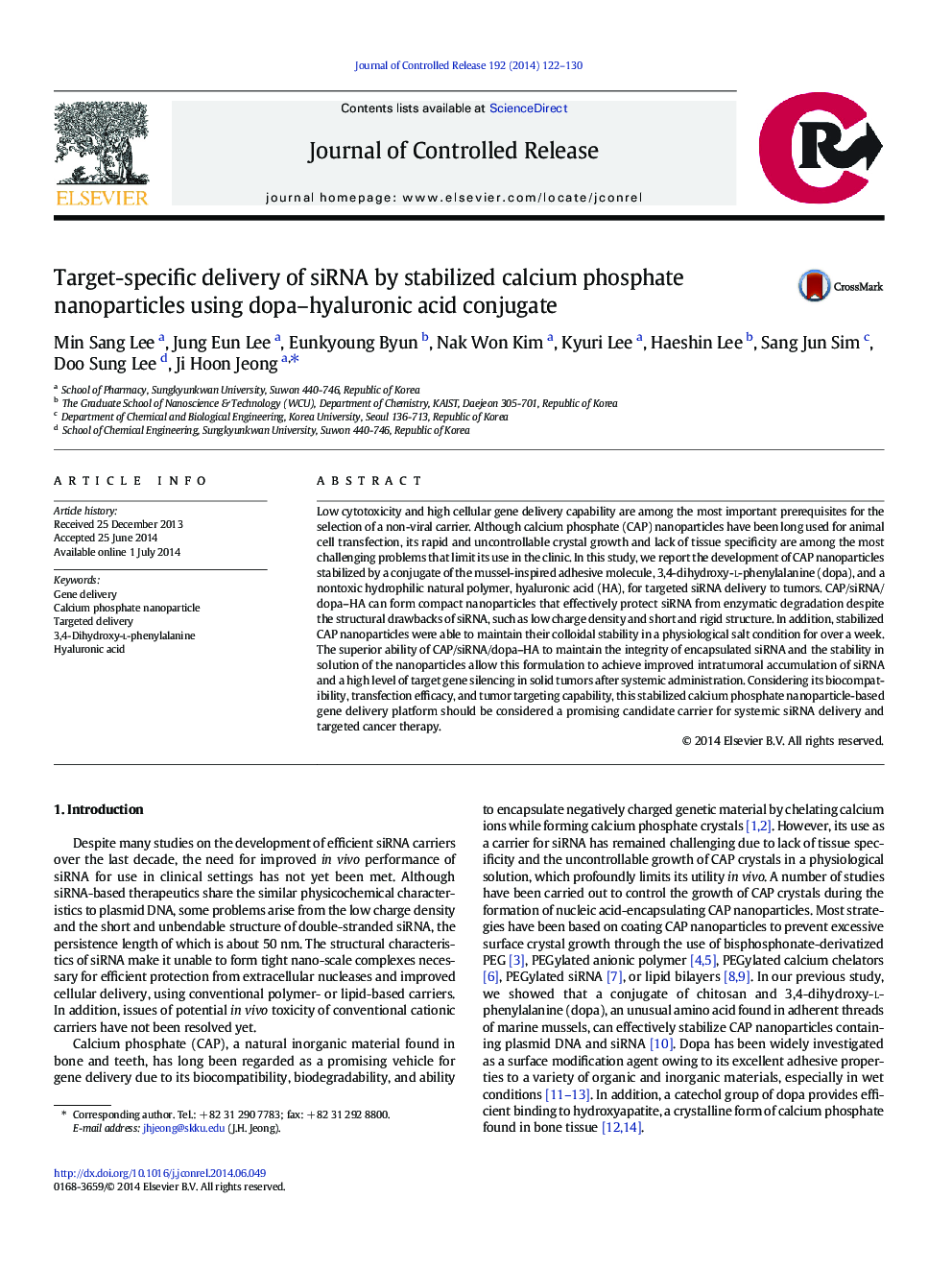| Article ID | Journal | Published Year | Pages | File Type |
|---|---|---|---|---|
| 1423927 | Journal of Controlled Release | 2014 | 9 Pages |
Low cytotoxicity and high cellular gene delivery capability are among the most important prerequisites for the selection of a non-viral carrier. Although calcium phosphate (CAP) nanoparticles have been long used for animal cell transfection, its rapid and uncontrollable crystal growth and lack of tissue specificity are among the most challenging problems that limit its use in the clinic. In this study, we report the development of CAP nanoparticles stabilized by a conjugate of the mussel-inspired adhesive molecule, 3,4-dihydroxy-l-phenylalanine (dopa), and a nontoxic hydrophilic natural polymer, hyaluronic acid (HA), for targeted siRNA delivery to tumors. CAP/siRNA/dopa–HA can form compact nanoparticles that effectively protect siRNA from enzymatic degradation despite the structural drawbacks of siRNA, such as low charge density and short and rigid structure. In addition, stabilized CAP nanoparticles were able to maintain their colloidal stability in a physiological salt condition for over a week. The superior ability of CAP/siRNA/dopa–HA to maintain the integrity of encapsulated siRNA and the stability in solution of the nanoparticles allow this formulation to achieve improved intratumoral accumulation of siRNA and a high level of target gene silencing in solid tumors after systemic administration. Considering its biocompatibility, transfection efficacy, and tumor targeting capability, this stabilized calcium phosphate nanoparticle-based gene delivery platform should be considered a promising candidate carrier for systemic siRNA delivery and targeted cancer therapy.
Graphical abstractA conjugate of hyaluronic acid and a bio-inspired adhesive small molecule, dopa, was used to prepare stabilized calcium phosphate nanoparticles for effective systemic siRNA delivery to solid tumors.Figure optionsDownload full-size imageDownload high-quality image (153 K)Download as PowerPoint slide
